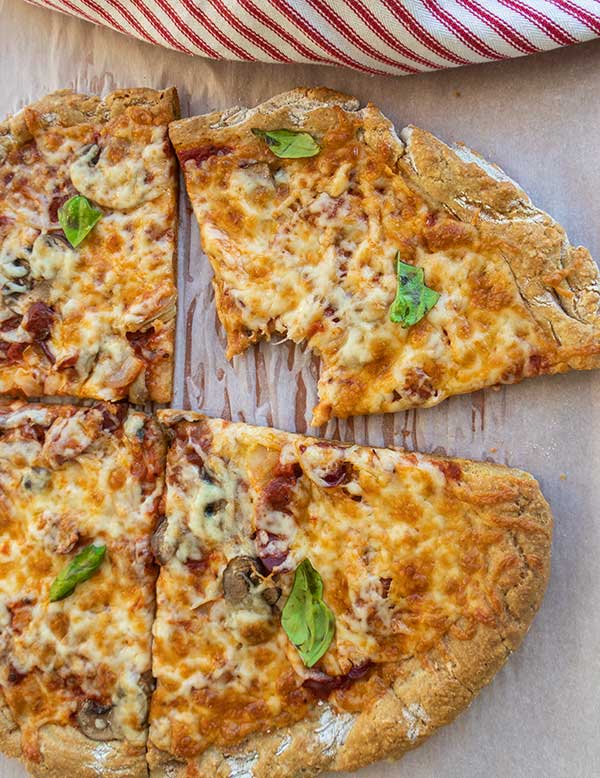Going Gluten Free? Tips & Tricks for Easing the Transition
BY LETTIE STRATTON
There are several reasons for eating a gluten-free diet. Perhaps you have celiac disease, a gluten intolerance, or other health concern. Maybe you have a family member who can’t eat gluten so you avoid it as well out of convenience and so you can all cook and eat together.
Whatever your reason is, making the transition to a gluten-free diet can be challenging and overwhelming. It’s easy to focus on all the things you can’t have and worry about how you will ever navigate the grocery store or, even worse, a restaurant, ever again.
But don’t despair! There are endless amounts of delicious and healthy gluten-free foods for you to enjoy. Here are a few tips and tricks to ease the transition to a gluten-free diet:
Ask Questions
Depending on your reason for going gluten-free and how serious you are about avoiding 100 percent of gluten, you’ll likely need to get comfortable asking all sorts of questions, like “Does this contain gluten?” and “Do you have any gluten-free alternatives on the menu?”
I find that this comes in handy when ordering food at a restaurant. Even if you say, “I’d like the turkey sub on gluten-free bread,” it’s always a good idea to double-check when your food arrives.
You can say something like, “Thank you so much — I just want to double-check with you that this is on the gluten-free bread.”
It doesn’t take more than one bad experience “getting glutened” at a restaurant to keep this follow-up question at the forefront of your gluten-free survival arsenal.
It’s also a good idea to check with co-op or bakery staff when fresh baked goods are labeled gluten-free. I’ve had a few experiences where the “gluten-free” and “vegan” stickers got mixed up, therefore labeling a very wheaty cookie as gluten-free.
Food service professionals and staff are generally kind and accommodating to questions and requests, so don’t feel like it’s rude or obnoxious to ask. When your health is at stake, it’s better to be safe than sorry!
Look for Hidden Ingredients
Gluten is sneaky. It tends to hide out in all sorts of things you assume wouldn’t contain gluten, like sauces, salad dressing, and meat. Even some types of paper plates contain gluten! Gluten is present in far more than loaves of bread and bowls of pasta.
When in doubt, always check the list of ingredients. A lot of processed meats often contain gluten, and sauces are especially sneaky culprits, with wheat-containing soy sauce, gravy, and salad dressings. Some ice cream even contains gluten.
Lots of things don’t get the “certified gluten-free label” because they were processed in a facility that also processes wheat, so depending on the severity of your allergy or intolerance, you may or may not be able to eat these things.
Get Some Help
There’s no shame in getting some help with your transition to eating a gluten-free diet. Gluten-free blogs and food websites are great resources, while many prepared food services now offer gluten-free prepared meals.
Trying something like this even for just a week could give you some ideas about the types of gluten-free meals you could be making.
Do you know other people who are gluten-free? Ask them for their favourite restaurants, products, and recipes.
There are generally two schools of thought when switching to gluten-free eating: either you eat relatively similar meals, replacing gluten-containing things with the gluten-free version (i.e. you still eat a bagel and cream cheese for breakfast, but now it’s a gluten-free bagel) or you change your diet entirely. That’s where getting creative comes in.
Get Creative
Getting creative and changing your diet entirely means cutting out gluten-containing foods and also their gluten-free substitutes. Instead of bagels for breakfast, you might explore some easy and delicious breakfast ideas that are naturally gluten-free, like smoothies or parfaits. Instead of bread and pasta for dinner, you might enjoy meat and vegetables. Who needs wheat when you can enjoy naturally gluten-free superfoods that will better serve you and your body?
Luckily, there are a lot of great resources available to help you organize meals if you decide to go in this direction. Paleo and ketogenic cookbooks are treasure troves of information for gluten-free recipes and meal plans.
Not being able to eat gluten is not the end of the world — especially if you arm yourself with resources and inspiration. By asking questions, keeping an eye out for hidden ingredients, asking for help, and getting creative with meal ideas, you won’t feel like you’re missing out on anything.
 Lettie Stratton is a writer and urban farmer in Boise, ID. A Vermont native, she is a lover of travel, tea, bicycles, plants, cooperative board games, and the outdoors. She’s still waiting for a letter from Hogwarts
Lettie Stratton is a writer and urban farmer in Boise, ID. A Vermont native, she is a lover of travel, tea, bicycles, plants, cooperative board games, and the outdoors. She’s still waiting for a letter from Hogwarts
Affiliate Disclosure: Only Gluten-Free Recipes is a participant in the Amazon Services LLC Associates Program, an affiliate advertising program designed to provide a means for sites to earn advertising fees by advertising and linking to amazon.com.


